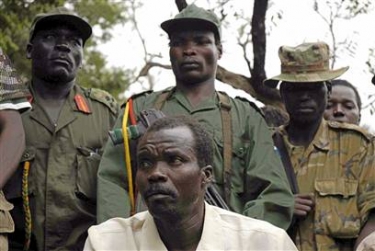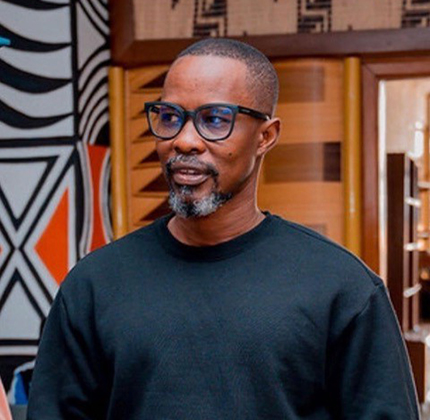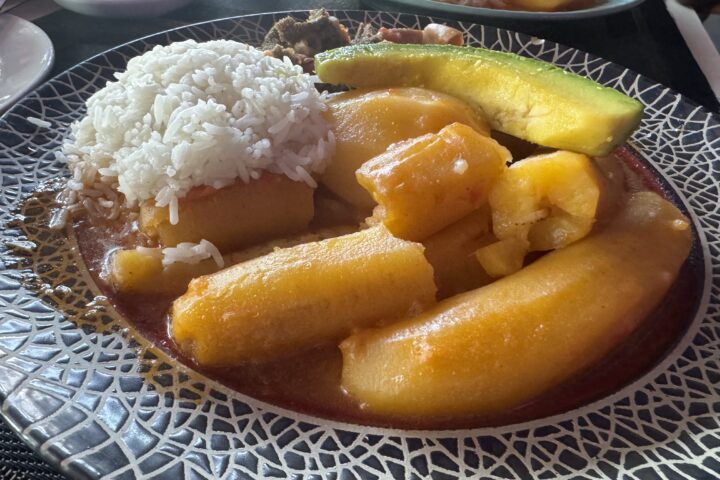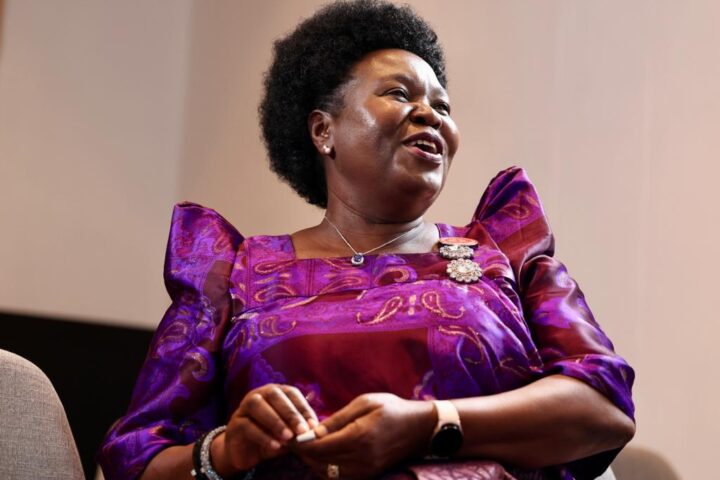I am reposting this New Yorker blog on how private philanthropy is involved in pursuing one of the world’s most wanted men. I will return to furnish my own information about some of the goings on in what may well be the last days of Joseph Kony’s nine lives. That said I get the sense that too many cooks will ruin this soup and it seems increasingly likely that this, the rivalry behind the hunt for Kony, will be the footnote on the story of the LRA leader’s final days. He has become something of a bounty killer’s dream. And they include governments, big and small, locals, and yes Christian Jihadis. Over to you.
How a Texas Philanthropist Helped Fund the Hunt for Joseph Kony

One night in July, 2010, Shannon Sedgwick Davis, a lawyer and activist from San Antonio, Texas, and the mother of two young boys, found herself seated across from the chief of the Ugandan Army, General Aronda Nyakairima, at his hilltop headquarters, in Kampala. “It was one of those out-of-body experiences,” Davis told me. Davis was on the verge of becoming deeply involved in the campaign to capture Joseph Kony. In the course of a quarter century, Kony abducted tens of thousands of people, mostly children, and conscripted them into the Lord’s Resistance Army (L.R.A.), which was conceived as a Ugandan rebel force but whose primary target has been civilians in several African nations. “I am a full-blown mom, sitting here with this Ugandan general,” Davis said. “And I can’t believe I have an audience with this man, and that he didn’t write me off as crazy.”
Davis had two questions for Aronda: Would military trainers and communications make it easier for the Ugandan Army to chase down Kony—who is wanted by the International Criminal Court—in the jungles of Congo, the Central African Republic, and Sudan, where he and his commanders have scattered, and, more important to her, rescue the women and children still in his clutches?
Yes and yes, said the general. His eyes looked so tired, Davis recalled, that she hadn’t been sure she had his attention. “You almost want to pry them open so you make sure he’s still listening. But he said they would welcome any assistance, and that it was their problem to solve.” It was late, and in that first meeting Aronda seemed unsure what to make of this passionate, small blond woman from Texas. But the meetings persisted. Together, they began to map out what the general wanted and the guarantees that Davis would require from the Ugandans before embarking on an unorthodox venture: the charitable organization she heads, the Bridgeway Foundation, would hire private military contractors to train an African army.

“I looked at him and said, ‘I know this is highly unusual. We’ve never done anything like this before,’ ” Davis told me. “If you asked me to script my life with the most crazy possibility, I could not have scripted this. So I need to go back to the U.S. and find someone smarter than me to advise me on this. I’m sure he was thinking, That is the last time I’ll see her.”
The operations that Davis would help set in motion—which have remained under wraps for more than two years—have helped to transform the Ugandans’ pursuit of Kony. He has been driven from his safe haven, in Sudan, and the Ugandan troops, aided by African Union forces and American advisers, are now close on his trail.
Davis has played a unique role in the long war against Kony since 2006, when she first began to help fund advocacy groups and activists working on the issue. “She is so down to earth,” said one high-ranking Ugandan officer, who has spent a lot of time with her. “She never throws her weight around like most Americans.” Advocacy groups and human-rights analysts working in Africa’s Great Lakes region have great respect for her work. Government officials are more wary. Not because they don’t like her or what she’s up to—I’ve never met anyone who didn’t—but because they don’t know how to process it all. “It all sounded so ‘Charlie Wilson’s War,’ ” one U.S. official said—a reference to Joanne Herring, the wealthy Houston activist and talk-show host who teamed up with the Texas politician to train and arm mujahideen fighters to take on the Soviet Union in Afghanistan. (Julia Roberts played her in the movie.) Davis couldn’t be less like Herring. She’s no socialite, and she has avoided any press out of a conviction that this was the Ugandans’ fight, and that her role would be misinterpreted.
Davis presents herself as all mom and all passion, driven by a progressive Christian faith. She is also the C.E.O. of the Bridgeway Foundation, the charitable arm of Bridgeway Capital Management, an investment firm with more than two billion dollars under management that gives half its after-tax profits to organizations working to end genocide and protect human rights. (Davis is also a Bridgeway shareholder.) She sits on the advisory council of The Elders, the supergroup of global statesmen that includes Nelson Mandela, Desmond Tutu, Kofi Annan, and Jimmy Carter. Earlier in her career, she worked with the International Justice Mission and forced her way into the Cambodian brothels of Svay Pak, to liberate young girls sold into the sex trade. She is impatient with half measures.
When I met Davis, this past summer, she was living in Rwanda with her husband and two children and their pet chicken. Bridgeway has funded projects there to assist widows and orphans, and has collaborated on the country’s genocide archive. Davis is deliberately understated: in Rwanda, she drove herself around; when we met, she wore a striped pullover with jeans and short boots. She wants her children to have a sense of her work, so she keeps a journal for them, which she updates every night. Around her neck hangs a charm of St. Jude, the patron saint of impossible causes; Bridgeway’s founder, John Montgomery, carries one as well.
Davis told me when we spoke again in New York this past week, that, in 2010, she realized that she had to move beyond advocacy. Ida Sawyer, Human Rights Watch’s lead researcher in Congo, whose work Bridgeway was helping to fund, had uncovered evidence of previously unknown L.R.A. massacres that had taken place in December, 2009. “She told me, ‘Shannon, I have some bad news,’ ” Davis said. Sawyer had travelled with a Congolese activist from village to village, along the so-called Trail of Death—a sixty-five-mile swath of destruction, along which the L.R.A. had murdered three hundred and twenty-one civilians and abducted two hundred and fifty people, including eighty children. Sawyer told her that Kony’s rebels—child soldiers among them—had tied victims to trees and hacked them to death with machetes and axes; women and children were not spared. “The massacres happened near a U.N. base, and the U.N. didn’t respond,” Davis said. “We not only didn’t do anything to stop it but all these people dropped off the face of the earth, and no one knew about it until brave Ida goes up there on a motorbike.” She was choked up as she talked. “That’s when I realized we had to do more.”
Davis started asking all her contacts—at Human Rights Watch, the U.N., and the State Department—what more she could do. They all had the same answer: there was a need for communications and training. What made the L.R.A. so tricky to pursue was that apart from its leaders, three of whom are still under indictment at the International Criminal Court, almost every member is considered a brainwashed abductee. The Ugandans were operating in foreign jungle terrain, and needed soldiers trained to rescue child hostages who are armed, who’ve survived for years in the bush, and who can disappear in a flash. The State Department was providing $1.2 million a month for two helicopters and fuel, part of the counter-L.R.A. program passed by Congress and signed into law by Barack Obama in 2010, which also included funding for a campaign to encourage L.R.A. fighters to defect and for community development in affected areas. But they could not foot the bill for trainers.
Davis had an idea for her contacts at State. “I knew without a shadow of a doubt that I wouldn’t just give the money to the Ugandans,” Davis told me. “But I thought, Could I fund it for you guys, and you go pick the trainers, and you guys be in charge of this and run interference?” They considered it for a few weeks, she said, but ultimately determined that they could not: there is no mechanism for the State Department to fund operations with private donations. At that point, Bridgeway consulted legal counsel to insure that its efforts would not violate any U.S. laws—including the International Traffic in Arms Regulations, which restrict the export of weapons and defense services. Just to be sure, Bridgeway also obtained an advisory opinion from the State Department’s Office of Defense Trade Controls Policy, noting that it was providing the actual funding through a third party. State replied that the operation, if it was limited to what Davis described, would be legal.
She had some tough moral choices to make. “I couldn’t do nothing anymore. What I was doing often felt like putting Band-Aids on bullet holes. After they’re shot, we patch up the wounds. After the girl is raped, we put up the radio tower to alert other villagers.”
But where to find trainers? “It’s not like you can open the Yellow Pages and look up private military contractors,” she said, laughing. But she managed to draw up a short list. One of the first men she met proposed “strong, forceful scary things,” she recalled, “and I just knew in my gut he was not the right person.” The next one asked for a twenty-five-million-dollar fee in the first twenty minutes of their dinner. That was not negotiable: she was not going to pay a fee on top of expenses. And then he berated their waitress because his pasta was not al dente. “I’m not very cultured,” she said, with her Southern twang. “I had to ask what al dente was.” It was a long dinner.
“I was heartbroken,” Davis said. “I really thought we were done.” Then Laren Poole called to tell her he thought he’d found the right man for the job. Poole was one of the founders of Invisible Children, the San Diego-based advocacy group that rocketed to international prominence last year, when their video “Kony 2012” was viewed hundreds of millions of times online, making Kony a household name across America. Davis had long supported the work of Invisible Children, including the installation of a high-frequency early-warning radio system, which allowed Congolese and Central African villagers to alert one another about the movements of the L.R.A., and a campaign of radio messages and thousands of fliers dropped from airplanes, encouraging L.R.A. fighters to defect. In 2011, she wooed Poole away from the organization, to work for her at Bridgeway.
Poole had been reading a military and security blog written by Eeben Barlow, who had been a commando and a covert agent for the South African apartheid regime’s most notorious squads. He was also a visionary and a dreamer. Back in 1997, he told me that his goal was to create the best and biggest military consultancy in the world. The private army he founded, Executive Outcomes, hired itself out, in the late nineties, to end civil wars in Sierra Leone and Angola in exchange for lots of cash and access to diamond and oil fields.
Davis went to meet Barlow in South Africa, and, after a family dinner with his wife and son, he told her he would take the job—and that he did not want a fee. He did not want to make money on this, he told her; she would just have to pay his trainers and underwrite his expenses. This was the kind of partner she was looking for.
The next day, Barlow, Davis, and Poole flew to Kampala to see if the Ugandans were on board. Davis once again laid down her own set of ground rules: “I was only willing to do training to save kids’ lives,” she said. “Human rights and cultural sensitivity had to be at the heart of what we were doing—freeing hostages, seeing civilians as assets. Anyone who would be trained had to be vetted. We didn’t want anyone from the old guard who had blemishes on their record, which I knew many in the Ugandan Army did.” She also wanted the force to include a considerable number of Acholis, the dominant ethnic group in northern Uganda, who have borne the brunt of the brutality committed by Kony, himself an Acholi. And she insisted that if Kony was captured the Ugandans would hand him over to the I.C.C.
Their first meeting was tense, but Davis was struck by General Aronda’s reaction to Barlow. “It was clear Aronda had a lot of respect for Eeben,” she said. “You didn’t have to prop up the droopy eyes—he was in the conversation.” It was an intimidating encounter, and at one point Davis had to rein things in. “Aronda was saying, ‘You’ll bring us helicopters.’ That was out of the stratosphere,” Davis said. “But he was being bullish. He was saying stuff he knew I had not said or contemplated.” She told him, “Sir, if we go into this we have to be honest with each other, and I will walk out if we can’t.”

Davis navigates on instinct and connection—she needs to find a personal bond. It may be ironic that she found it in Barlow. It began when she met his wife and teen-age son, Jay, a Buddhist who urged his father, after they watched an Invisible Children video together, to help stop Kony. He reminded Davis of her own son—“all heart.” Barlow himself is a complicated character; he has mellowed with age, and has adopted the role of a lecturer and wise man on failed states, African conflicts, and counterinsurgency. For this mission, he even cut his trainers’ salaries in half. To keep their expenses at a minimum, they lived and ate with the Ugandan military.
Davis soon developed such a bond with General Katumba Wamala, then the chief of Uganda’s land forces, and the man in charge of the counter-L.R.A. campaign. Wamala is also a funder of Rahab, a Ugandan group that rescues young prostitutes. “There was a heart connection with Wamala,” Davis said. “I felt I could trust him.”
By December, 2011, three hundred Ugandans had passed through Barlow’s intensive three-month course at an Army base in Arua, near the border with Congo. Last summer, I met several of the lieutenants and enlisted men who went through the training paid for by Our Mama, Madame Shannon, as they refer to Davis, whom they met alongside General Wamala, at their graduation, out in the field, and, later, “waving from the air to us in the bush.”
The effects of the training were evident. Charles, a lieutenant from West Nile, told me that in the old days they would unleash a thousand bullets every time they encountered the L.R.A. Now, he said, they would wait and track in silence. The South Africans had taught them tactics for crossing rivers with logs and ponchos, how to swim and how to avoid crocodiles, which had killed one soldier and attacked another. “The South Africans taught us ‘pseudo,’ ” Charles said. “You behave like your enemy so you can approach him, or even infiltrate inside the camp. We pleated our hair like they do, put on civilian shirts, uniform pants. Sometimes we went barefoot. We used to travel forty or forty-five in a team; now we can go six.”
In September, 2011, the first special-operations group trained by the South Africans crossed into South Sudan and caught Kony by surprise at a meeting with all his commanders. He escaped, but the Ugandans took back a haul of valuable intelligence: satellite phones, a computer, and diaries. Defectors later revealed that the L.R.A. fighters were baffled by the attack: Was this some new Ugandan army? After the raid, Kony lost contact with his entourage. He roamed the bush alone with one of his pregnant Sudanese wives, and helped deliver her baby—one of probably more than a hundred small Konys now in the world. When he reëmerged, he was so furious that he demoted all his commanders. According to defectors, he had moved to a new camp, in southern Darfur.
By the end of 2011, Barlow and his trainers were gone. “Even folks at State and the Department of Defense acknowledged the training Bridgeway offered was very helpful in advancing the Ugandan Army’s capacity,” a Washington-based analyst told me. But they are not yet willing to say so publicly. When I asked a State Department official about the significance of Davis’s work, he refused to comment beyond noting that “the Bridgeway Foundation is an independent organization that does not have an official relationship with the U.S. government.”
Much of the official American discomfort had to do with ambivalence toward Barlow, whose colorful past did not endear him to Washington. “It was a highly complex and difficult issue,” a person familiar with the operation told me.
In October, 2011, Obama announced that he was dispatching about a hundred Special Forces advisers to assist the Ugandan and African Union forces. But the Ugandans still needed greater mobility to pursue real-time intelligence, medevac wounded victims, and transport dozens of child and adult defectors. So Davis stepped up her assistance. As Aronda had predicted in their difficult first meeting with Barlow, Bridgeway acquired a Bell 412 helicopter and a Cessna Caravan. (They have also provided night-vision goggles, satellite phones, and radios.) “That Bell helicopter was doing seventy-five per cent of the tactical operations, even after the U.S. brought two helicopters out there,” the Washington-based analyst told me. “The U.S. limitations were too severe. Some of them had a seventy-two-hour advanced notice to fly—they were based out of Nzara,” in South Sudan, and by the time they were airborne the L.R.A. was long gone.
Around this time, additional contributions came in from the philanthropist and agricultural maverick Howard Buffett, and from Muneer Satter, a former Goldman Sachs partner and vice-chairman of the firm’s charitable foundation, who heard about Davis’s project and approached her. All this helped underwrite the escalating price of the operation: the helicopter costs about a hundred and sixty-eight thousand dollars each month, and the plane about seventy-three thousand dollars. Buffett told me he had even spent a night at one of the forward operating bases in the Central African Republic. “It’s miserable,” he said. But after consulting with lawyers to establish what was permitted, Buffett had few doubts about providing financial support. “We spent money on reintegration of child soldiers, on rebuilding agricultural areas, counselling rape victims. Why would you not jump at the chance to stop the core problem? If I can spend my money stopping it so I don’t have to spend more money in the future on the victims?”
The results of the Ugandans’ persistence, Bridgeway’s training and financial support, and U.S. intelligence-sharing have been substantial. By the end of 2012, the chase for Kony was gaining momentum. In December, a commander close to Kony defected, and drew the Ugandans detailed maps of the L.R.A. camp in Darfur. A month later, Kony’s top bodyguard was killed. His diary, recovered by Ugandan troops, was filled with orders for ivory and maps detailing the trail of the L.R.A.’s ivory-trafficking operations. But the real gold was a G.P.S. unit he had been carrying containing a virtual archipelago of the L.R.A.’s movements, which included the coördinates of Kony’s new camp, in Darfur. Determining the location of the camp enabled the Americans to capture satellite images of it; the Ugandans told me that the U.S. had even gotten an aerial photograph of Kony in the camp. “Looking fat!” one said with a laugh.
In early March, 2013, a hundred and fifteen Ugandan soldiers who had graduated from Barlow’s course, and had received additional training from the Americans, were airlifted to a temporary base on the border of Sudan and the Central African Republic. They hiked into Sudan at night to avoid detection by local cattle herders. They had spent months planning the mission, called Merlin, and they had confirmation that Kony and his entourage—wives, children, and bodyguards—were in the Darfur camp. Davis hired two more helicopters, at significant expense, in the hope that they could carry up to a hundred and fifty women and children to safety. One of the assault groups was commanded by Opio Makas, a former high-level L.R.A. commander who had been abducted when he was twelve. He was hoping to catch Kony himself. “All the Acholi boys wanted to capture Kony alive,” said one Ugandan lieutenant, “so he would have to answer why he caused them so much suffering.”
After three days, the Ugandans encircled the Darfur camp. It was empty. Judging by recently harvested cassava that was not yet dry, and by the remains they found in Kony’s personal latrine, it seemed that the L.R.A. had fled less than a week earlier. The Ugandans found a spear that belonged to Kony, as well as the diary of Salim Saleh, his most trusted and feared son. “In Kony’s house, we even found marijuana seeds wrapped in a black cloth,” one told me. But something had gone wrong. Defectors from Darfur told me this past summer that Sudanese Army officers had tipped off Kony. But the Ugandans believed the Americans had intelligence indicating that the L.R.A. leader had already fled, and that they had failed to share it, which nearly derailed the U.S.-Ugandan partnership.
“Our commanders told us the mission was wonderful. It was the first time such an operation happened. But our morale was very low,” one of the Ugandan soldiers said. Davis was “devastated,” she told me, and it took her some time to recognize that the raid had not been a disaster. “I viewed it as a failure, as most people would in the aftermath,” she said. “But in hindsight it was an incredible success. What we’ve come to learn is that they took away Kony’s safe havens.”
The seriousness of the raid seems to have changed the calculations of Sudan’s President, Omar Al Bashir, who may not have wanted the embarrassment of having Kony captured by foreign troops on his soil. The L.R.A. leader, no longer welcome in Sudan, is now somewhere in the Central African Republic. Every ten days or so, the Ugandans turn up at a camp from which Kony or one of his top commanders has just fled. He has nowhere left to hide.
There is no doubt that Davis’s unusual role in the anti-L.R.A. campaign has been decisive. But the campaign itself has been an anomaly: cobbled together, as many have said, by love and Scotch Tape, and steered by an eclectic coalition of outside activists and committed individuals within the U.S. government and the U.N. Without all these actors working in tandem—without the defection programs inside Congo and the Central African Republic run by the Ugandans and Invisible Children, and without the youth support of the grassroots campaign conducted by Invisible Children and Resolve—it is unlikely that Congress would have passed the 2010 bill funding efforts against the L.R.A., and even more unlikely that the Obama Administration would have persuaded the Pentagon to send Special Forces advisers to assist the Ugandans on a mission with no national-security implications for the U.S.
In Davis’s darker moments, like after the raid in Darfur, she has wrestled with her decision to hire Barlow, to get involved in military action. At one point, the F.B.I. contacted her, wanting to know about the nature of Bridgeway’s financial transactions with Eeben Barlow. “It was incredibly sucky,” she recalled.
But then she reminds herself of the numbers. In the past two years, L.R.A. violence has dropped by ninety-three per cent, from seven hundred and six killings in 2010 to only fifty-one in 2012. According to Resolve, a U.S.-based analysis and advocacy group, the L.R.A. had approximately four hundred fighters in 2010; by June, 2013, they were down to a hundred and eighty Ugandan fighters and fifty armed zande—abductees from Congo and the Central African Republic.
“It was only ninety-three per cent because of relentless pursuit,” Davis said. “If we pulled out, that would plummet. I know that is something to celebrate. And if Kony dies a natural death under a mango tree someday, I’m O.K. with that—I know he’ll see justice, as long as he is not hurting kids and women.”
“We don’t need accolades,” Davis told me. “We are not bleeding at the end of the spear, getting pursued by crocodiles and killer bees. The Ugandans are.” And they show no signs of letting up.
Top: Joseph Kony in 2006. Photograph by Adam Pletts/Getty. Middle: Shannon Sedgwick Davis, Laren Poole, and Col. Mike Kabango, in March, 2013. Bottom: Howard G. Buffett and Shannon Sedgwick Davis in the Central African Republic, May, 2012. Photograph by Laren Poole










